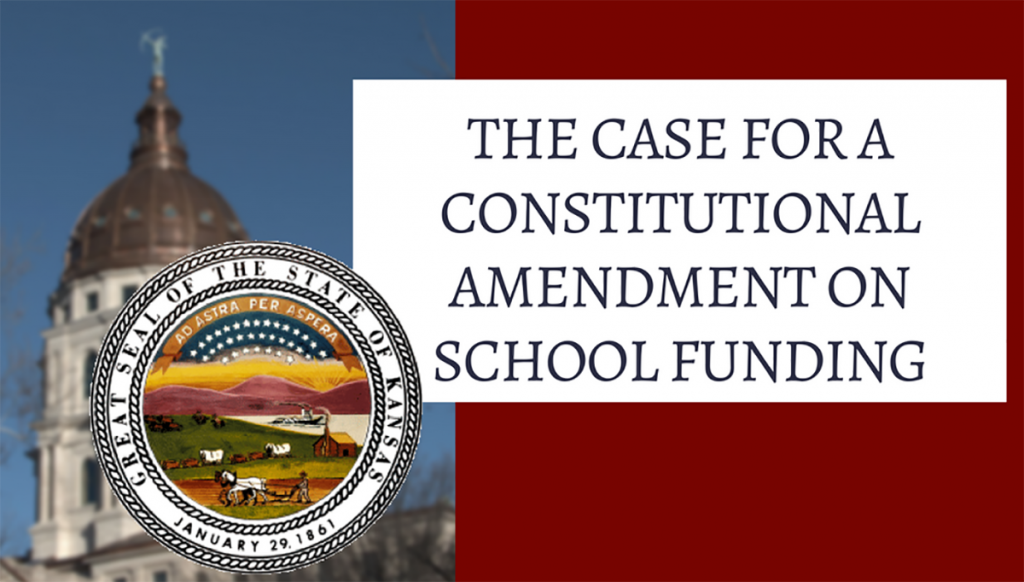The Kansas Supreme Court’s latest ruling that a six-year, $854-million funding increase is inadequate has renewed talk of amending the constitution, and that has evoked emotional responses from opponents. Some proponents have even been accused of being anti-education and ignoring the rule of law.
Blanket charges of that nature are neither fair nor accurate; everyone is entitled to their opinion and no one should be attacked for their view on this issue.
Those opposed to amending the constitution generally cite two reasons for their objection: respect for a system of checks and balances and schools won’t be adequately funded unless the court intervenes.
Separation of powers is fundamental to our constitutional republic, and the Kansas Supreme Court has made two critical findings that explain why courts cannot set funding levels.
Its 1994 ruling in USD 229 v. State of Kansas declared that “suitable provision for finance” in the Kansas constitution does not refer to a level of funding, but to a system of finance which, as stipulated in the constitution, may not include tuition. “Adequate” isn’t part of the constitutional language on education; that adjective was created by courts.
And in 2015, the court found the Legislature’s attempt to allow local judges to elect their own chief judge unconstitutional. The court said the Legislature violated the court’s constitutional authority and quite emphatically said it is the duty of the judicial, legislative and executive branches “ … to abstain from, and to oppose, encroachments… ” on their authority.
Since the Kansas constitution vests authority to spend money solely with the Legislature and the 1994 court said the constitutional meaning of “suitable” doesn’t reference a level of funding, those proposing a constitutional amendment believe they are honoring the system of checks and balances and upholding the rule of law and constitutional intent.
By the way, the Kansas Department of Education estimates school funding set yet another record last year, likely exceeding $13,600 per student.
Ignoring the 1994 precedent isn’t the only directional change of the current court. It’s not unlike playing board games with young children, with the rules constantly changing so the rule-maker can win.
The court’s first ruling on the current case established a new test of adequacy (reasonably calculated for students to achieve certain outcomes) rather than the old Base State Aid primary test; it also said all funding sources should be considered and declared cost studies to be “more akin to estimates than … certainties.… ” Now we’re back to using artificially inflated cost studies and primarily focusing on Base State Aid.
Student achievement is only marginally considered. Every instance cited purporting to correlate higher spending with better outcomes is easily refuted with multiple examples showing exactly the opposite.
Finally, even if the Legislature adds more money and satisfies the court on adequacy, it’s just a matter of when the next lawsuit is filed. The Legislature’s cost study with its $2 billion recommendation is a ticking time bomb, and school attorneys won’t hesitate to exploit it.
For these reasons, many people believe a constitutional amendment is the only way to end the litigation cycle. A constitutional amendment would also prevent courts from effectively imposing even larger tax hikes, which dramatically impact our children’s future. It’s time to stop repeating the same failing practices and get back to enabling our teachers to educate our students.





